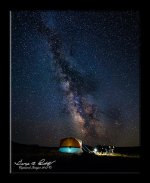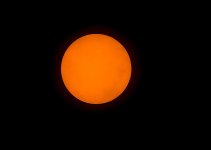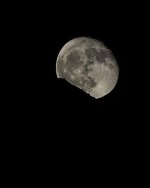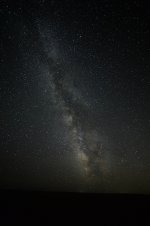Yan Lauzon
Senior Member
I am wanting to explore astrophotography. I am interested in shots of the moon, large planets, milky way, and would like to get ready for the next eclipse coming here in about 6 yrs.
Reading up the internet seems to go in all directions.
I have a D3200, and currently the kit 18-55 and 55-200 along a 50mm yongnuo.
For the moon (and the sun, with filter) I understand about 600mm to 800mm would be great (correct me if I am wrong)
For milky-way a wider lens would help as long as it can easily focus to infinity.
Should I look into getting geared up to a telescope, or focus on camera lens?
I see many non-brand 400-600mm manual focus lens, or very pricey af-s nikon ones...
Opinions would be greatly welcomed, or any guidance.
Thanks a lot.
Reading up the internet seems to go in all directions.
I have a D3200, and currently the kit 18-55 and 55-200 along a 50mm yongnuo.
For the moon (and the sun, with filter) I understand about 600mm to 800mm would be great (correct me if I am wrong)
For milky-way a wider lens would help as long as it can easily focus to infinity.
Should I look into getting geared up to a telescope, or focus on camera lens?
I see many non-brand 400-600mm manual focus lens, or very pricey af-s nikon ones...
Opinions would be greatly welcomed, or any guidance.
Thanks a lot.




